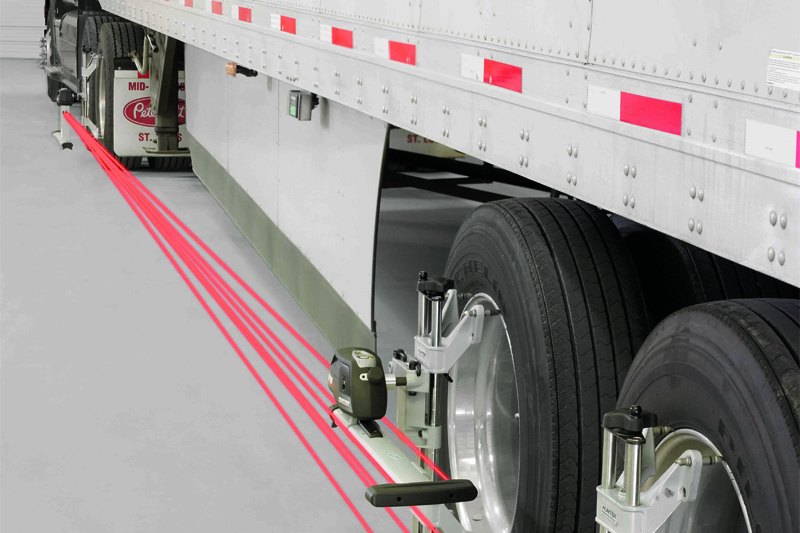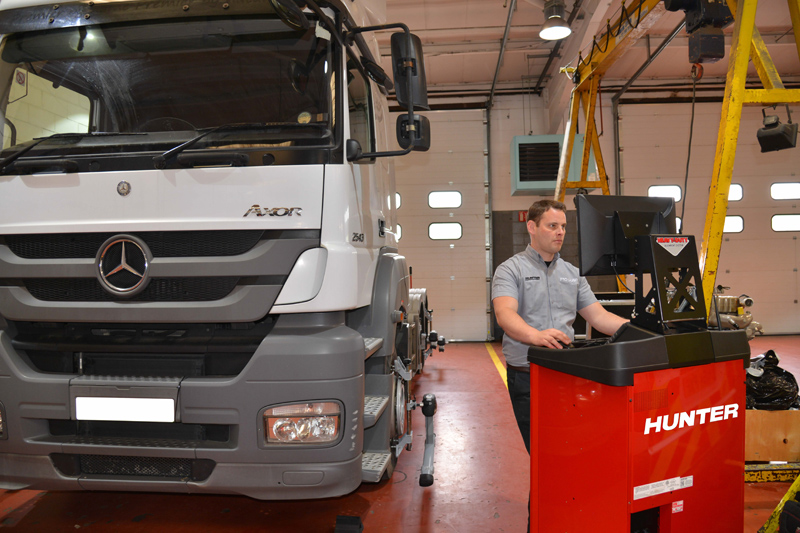
Save costs with pre-service alignment checks, advises Pro-Align.
In most car manufacturing plants, there is a production line geometry checking facility, followed up with a quality control audit alignment check at the end to ensure the main production line alignment system is setting the wheels of new vehicles correctly. Buyers can take to the road confident that there will be no tyre damage or reduced fuel economy because of poor wheel alignment on their brand-new cars.
However, in the commercial vehicle sector there seems to be comparatively low levels of awareness when it comes to the importance of checking alignment on new vehicles before they enter service, and even less when it comes to commercial vehicle trailers. The result is that a brand-new trailer could be out of alignment when a customer receives it, with the potential of immediate, costly damage to tyres and higher fuel consumption – the top two operating expenses in commercial vehicles.
Both are typically perceived as hard to control, but correct wheel alignment is the most effective way to cut cown on type costs and, by extension, fuel costs too. For fleet buyers, it makes sense, therefore, to check with your trailer manufacturer or supplier whether they include alignment checks in the manufacturing process or as part of the audit trail, or before a trailer is released for sale.
Asking this question is even more pertinent when acquiring second-hand or rental trailers where the history of that trailer and the level of punishment it received during its previous working life may be unknown. If there is no record of a pre- delivery wheel alignment check, Pro-Align advises that operators have the alignment confirmed before the trailer enters service.
For manufacturers and dealers, a recorded wheel alignment check is the final sign off to ensure the trailer is delivered with the optimum set-up. This offers a greater level of transparency, a duty of care, and ultimately customer satisfaction. For the customer, it is reassurance that the trailers are set straight, it improves handling and minimises the risk of premature tyre wear, excessive rolling resistance and therefore increased fuel consumption.
Routine alignment checks
According to data obtained by Pro-Align Hunter in the US, at least 70-80% of HGVs on the road today are misaligned. In the UK, while there is no widely available data on numbers of vehicles with misaligned wheels, it is recognised that many operators do not include routine checks in their maintenance schedules. Whether this is due to of a lack of understanding of the consequences or because the industry finds it time-consuming and difficult to manage, the result is that in-service re-alignment mostly occurs after the damage is done.
By making alignment part of the trailer’s preventative maintenance programme, operators can easily manage this perceived uncontrollable expense. A misalignment of 1% can increase fuel consumption by up to 5%, while a misalignment of 0.5% can reduce tyre life by as much as 50%.
For optimum transport cost saving, it is important to ensure the tractor unit is also aligned with the trailer. In most cases, for every one tractor unit there will be up to
five trailers allocated to it. A proper wheel alignment service at regular service intervals means you can monitor the geometry. Prevention is better (and more cost-effective) than the cure. Pro-Align recommends a minimum of two or three alignments per year, or every 50,000 to 60,000 miles (if sooner).
So, whether you are a fleet operator or independent service specialist, it’s worth considering adding routine alignment to regular trailer servicing schedules – and modern alignment equipment means it needn’t result in more downtime or onerous staff training.
Pro-Align’s new Hunter WA300HGV, for example, takes minutes to check and report on the alignment of a truck or trailer. A full graphical printout provides a full before and after record. Most experienced HGV technicians can learn alignment quickly.
Records can be kept with the vehicle, forwarded to the customers. Trailer manufacturers, dealers and fleet workshops can record and monitor every alignment job done, potentially identify trends and activities for those assets being measured, and produce an alignment history of each tractor unit/trailer in the fleet.
“By making alignment part of the trailer’s preventative maintenance programme, operators can easily manage this perceived uncontrollable expense. A misalignment of 1% can increase fuel consumption by up to 5%, while a misalignment of 0.5% can reduce tyre life by as much as 50%.”









